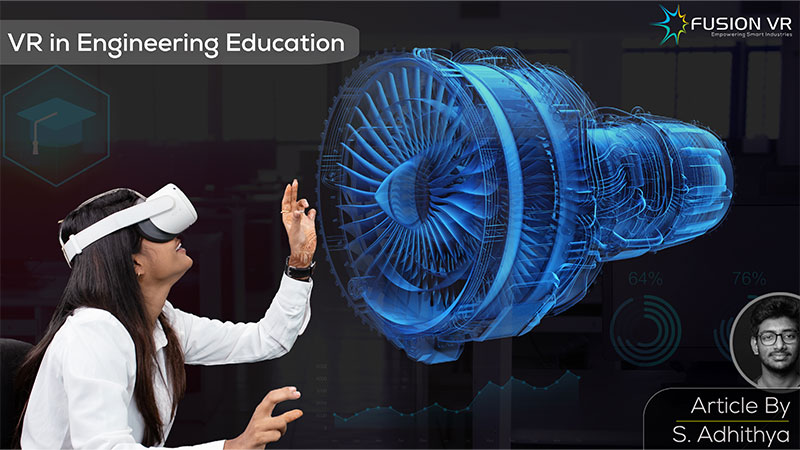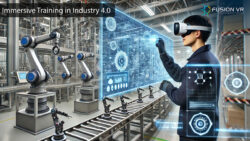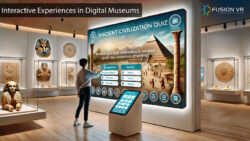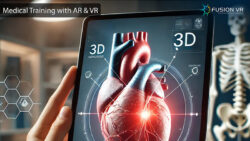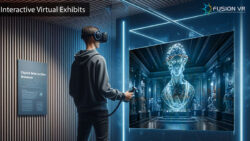Implementing VR in engineering education improves training and sharpens students’ skills. Fusion VR is one of the leading companies in India that provides industrial AR VR & MR solutions for companies across the globe.
Virtual Reality (VR) in engineering education is an absolute game changer! Virtual Reality (VR), which was primarily seen as an entertainment technology, is getting mainstream as a learning tool. It enables students to learn in an immersive way that a traditional learning environment and lectures cannot provide. This technology is simple, accessible, and a lot of fun.
Virtual Reality lets the user experience specific scenarios in the virtual space which are physically restricted in the real world, and this capability is very much needed in engineering education. Education is best delivered when it is gamified as it makes the learning process more interactive, and this is where Virtual Reality performs exceptionally well.
With this way of immersive learning or V-learning, the user easily understands important concepts in an efficient and effective way. Virtual Reality in engineering can be employed to visualise 2D design drawings and 3D models of physical parts like an engine, turbine, turbochargers, etc.
It can simulate the functionality of those parts for better understanding. Moreover, students can be trained on specific scenarios in a digitally recreated virtual world, which helps them handle those scenarios efficiently as all these experiences are gamified, which intrigues students to learn more and makes it easy to remember.
According to a PWC report, 40% of the v-learners saw an improvement in confidence compared to classroom learners and 35% improvement over e-learners to act on what they learned after training in VR. The report also indicates that VR training is four times faster and more focused than classroom training.
By nature, the human brain is wired in such a way that it acquires knowledge through cognitive learning or experiential learning. So, what is cognitive learning? It is a mental process of gaining knowledge through experience, senses, interactions, and thoughts. This style of learning enables students to exploit the maximum potential of their brainpower to learn more efficiently.
Using Virtual Reality to Overcome Limitations in Engineering Education
Technology has transformed so much that the natural way of learning, i.e., cognitive learning, can now be synthetically recreated for the first time in human history. Among the currently existing technologies, virtual reality is the only technology that can artificially simulate experiential learning in a psychologically convincing way that is close enough to our physical hands-on training.
In a 3D virtual world, the brain interprets and remembers the information in a very natural way, so the learning efficiency and speed are relatively higher than in the traditional way. This 3D world follows exactly the same rules and physics as the real world. The objects inside this virtual space have realistic lighting, texture, depth, and 360 spatial audio, which makes the experience more believable by artificially stimulating the receptors in our sensory system.
For many engineering institutions, it is practically not possible to afford laboratory-scale industrial equipment for the purpose of student training. As class sizes are big, many students do not get the opportunity to get a hands-on experience with the types of machinery which can be provided by Virtual Reality.
Take, for example, the area of Biomedical Engineering. Virtual Reality enables the student to learn how to operate an MRI machine safely and properly. It can also provide an X-Ray view for a better understanding of how the machine is physically constructed, its various parts, and its functions.
In the field of Electrical engineering, where there are more risks involved, the students can be trained to handle the equipment carefully and can ensure a safe learning environment. This training can be repetitive, and as its gamified, it is engaging while at the same time building muscle memory on the desired skills.
It must be quite clear that Virtual Reality, when used at its maximum potential, is a powerful weapon, and employing it in engineering education can levitate the education quality to a whole new level for the technology and knowledge-based society of the 21st century.

